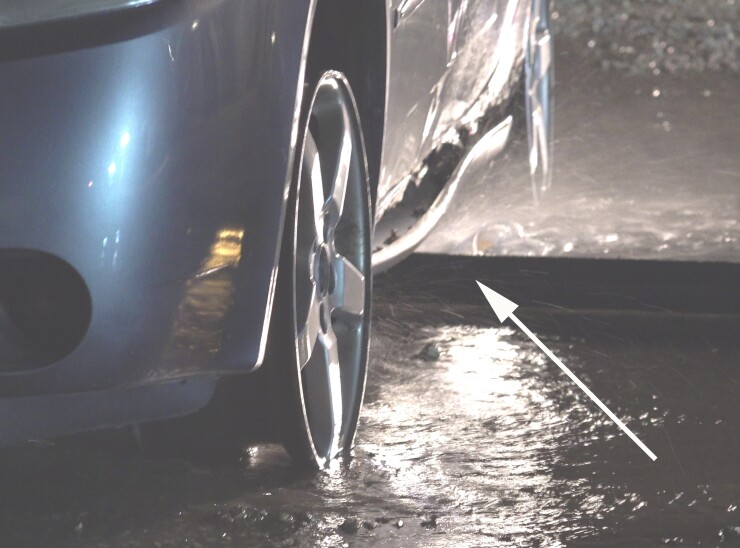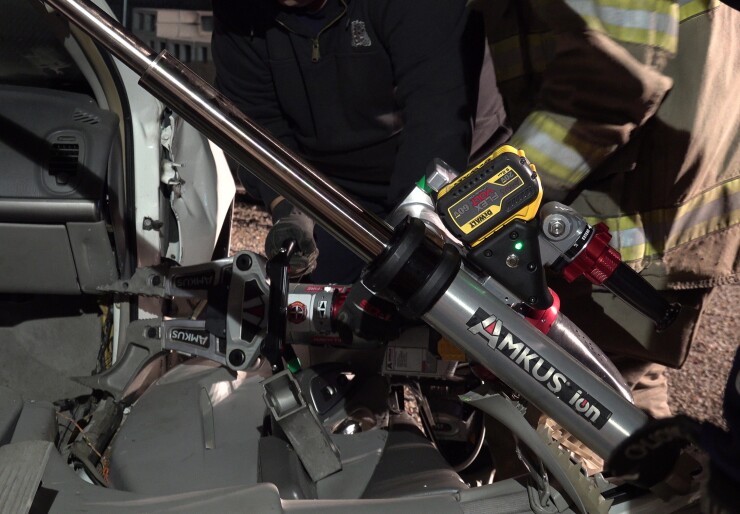Extracting occupants from an electric vehicle fire

Electric vehicles (EVs) catch on fire at a rate less than that of petroleum-fueled vehicles. However, when they do catch fire, the result is usually catastrophic. Petroleum-fueled vehicles burn from about 1500 to 2000 degrees Fahrenheit and are usually extinguished quickly by most fire department procedures. EVs burn at over 5000 degrees F, making them quite difficult to extinguish. Drenching the EV with several tons of water does little to extinguish the fire because the battery chemistry is such that the fuel and oxidizer are provided internally. A typical fire department procedure is to hook a chain to the burning EV, drag it away to prevent thermal damage to nearby structures, and let it burn itself out.
Large high volume sprinkler that is placed under an electric vehicle to cool the underside while attempting to extract occupants.
For electric vehicle occupants involved in an accident with entrapment and a fire, extraction poses additional difficulties compared to petroleum-fueled vehicles. Fire departments are now being trained on how to handle this situation with an entrapped occupant in a burning EV. When the fire department shows up, the firefighters must be “on air,” meaning that they must use an air pack (self-contained breathing apparatus, SCBA) because of the toxic fumes (hydrogen fluoride) emitted from burning electric vehicles. Then, the firefighters approach the EV, lift one side, and install a huge sprinkler head underneath the vehicle, which blasts the underside with water in an attempt to cool the area where the person is to be extracted. Water flow can be up to 500 gallons per minute. This sprinkler is not designed to put out the fire but to cool the area of extraction.

The arrow points to a hose with the sprinkler attached that is shoved under the vehicle to cool the area near the occupant.
Next, the firefighters attempting to use the jaws-of-life to cut the occupant out of the vehicle must first query an app to determine where the high voltage wiring is located in the structure of the particular model and year of the EV so that when cutting, they will not be electrocuted. The year and model number of the vehicle must be input into the app to get a diagram of the routing of electrical wiring.

Motorized jack and “jaws of life” typically used to extract an occupant from a vehicle involved in an accident.
If the app does not work because of a lack of internet signal, or if the firefighters are not able to identify the model and year of the EV, they will have to guess where to cut. After cutting the structure, the occupant can be extracted from the vehicle, provided there has been enough water to cool the EV. Once the occupant is out, the EV is moved to an area that is not near combustible property and left to burn itself out. Fire department procedures for handling electric vehicle fires vary around the country. The procedure mentioned here is typical.







